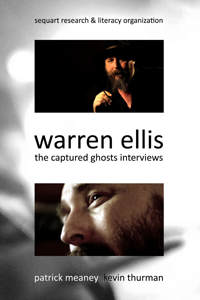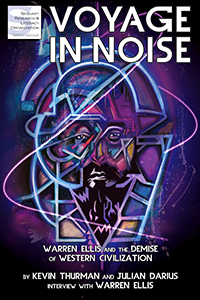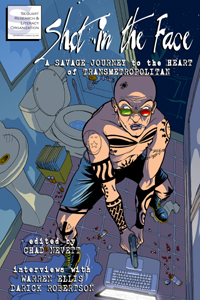This week marks the final installment of our search for a comics canon. As I mentioned in the first column, I recently conducted a survey of the people who contribute to Sequart. A total of 25 people agreed to participate by ranking the ten greatest comics ever produced and the ten most important creators. This week, we take a look at the creators.
But why compile two lists? As you’ve probably gathered by now, I’ve tried to approach this project as an experiment modeled on the famed poll that the British film magazine Sight & Sound conducts every ten years. In that poll, critics rank both the greatest films and the greatest directors. In our case, I was curious to see if voters approached these two types of lists with different criteria, or if they would simply duplicate each other.
A creators list also allows us to think about different ways of shaping a canon. Traditionally, we associate canons with individual works, but there are many advantages to thinking of a canon in terms of writers and artists. On a subtle level, focusing on the creators helps to clarify the need for greater diversity. For example, in literature, it’s tempting to look at a collection of great works and feel content that the broad spectrum of humanity is being represented so long as diverse subjects are being addressed. Interested in women’s issues? Read The Scarlet Letter. The African-American experience? Try The Adventures of Huckleberry Finn. If you only focus on the books, you can convince yourself that you’re viewing the broad panoply of life from a front row seat. However, if you compile that same list of great works by author, you’re reminded, once again, of just how dead, white, and male the perspective you’ve been reading really is. So in a subtle way, listing creators offers a subtle kick in the seat of our collective and homogenous pants.
On a more practical front, focusing on comics creators also helps to combat some of the problems we have quantifying their work. For example, if a creator—particularly a creator from an earlier era—spent his or her life working either on a long-running comic strip or on extended runs of serialized comics, we may not always think of that work as standing alongside more definable, focused books like Watchmen. Will Eisner’s The Spirit, for example, is one of the most influential series in comics history, but if we apply the narrative standards we use for finite series—even long ones like The Sandman—Eisner’s Spirit can wind up looking like a sputtering collection of short, formulaic stories. So a creators list helps us get out of the trap of applying irrelevant standards to works from different eras.
Likewise, creators who have specialized in short pieces often have trouble finding space in a greatest works canon. In our poll of the greatest works, for example, there were a couple of undefined votes for some of Harvey Kurtzman’s EC stories. People clearly wanted to support Kurtzman, but there wasn’t an easy book or collection to put one’s finger on. Other creators, particularly those who are highly prolific, often wind up with several interesting titles competing for space. Their many accomplishments divide voters and stifle consensus, and this leaves their work out in the cold.
So let’s see if we get different results from this creators poll. Once again, the ground rules were simple. Both artists and writers would be included in the same list, primarily so no one would have to decide how to classify cartoonists and double-threat creators like Art Spiegelman, Charles M. Schulz, and Frank Miller. The only compromise here was that almost everyone who mentioned either Jerry Siegel or Joe Shuster listed them together, so I followed suit. On the other hand, even though a couple of voters did the same for Stan Lee and Jack Kirby, I opted to split their results because they had far more support individually.
As with last time, we have two lists. The first reflects the number of mentions each creator received and the second assigns a weighted score based on each voter’s rankings. However, since not all the voters were willing to rank their choices, the second list has less validity.
Also, before presenting this final list, I want to take a moment to thank all the participating voters. This series of columns couldn’t have existed without their participation, and I am deeply indebted to them, both for their lists and, in many instances, for their additional feedback. The same goes for Mike Phillips, who had to act as email go-between for all of the voters and Julian Darius, who has had to figure out how to make these cantankerous, two-column lists look good on the website.
| Ranked by Number of Votes | Ranked by Weighted Score |
| 1. Jack Kirby (20) | 1. Jack Kirby (162) |
| 2. Alan Moore (19) | 2. Will Eisner (123) |
| 3. Will Eisner (17) | 3. Alan Moore (119) |
| 4. Stan Lee (13) | 4. Stan Lee (80) |
| 5. Frank Miller (11) | 5. Frank Miller (54) |
| 6. Grant Morrison (10) | 6. Grant Morrison (50) |
| 7. Neil Gaiman (7) | 7. Jerry Siegel & Joe Shuster (44) |
| 8. Jerry Siegel & Joe Shuster (6) | 8. Neil Gaiman (41) |
| —. Moebius (6) | —. Moebius (41) |
| —. Osamu Tezuka (6) | 10. Osamu Tezuka (38) |
| —. Steve Ditko (6) | 11. Steve Ditko (27) |
| 12. Harvey Kurtzman (5) | —. Hal Foster (27) |
| —. Warren Ellis (5) | 13. Harvey Kurtzman (25) |
| 14. Robert Crumb (4) | 14. Robert Crumb (20) |
| 15. Charles M. Schulz (4) | 15. Charles M. Schulz (19) |
While most of the ordering of names is similar—only minor variations throughout—the weighted score shows a remarkable amount of enthusiasm for Jack Kirby. Even though he and Alan Moore were both mentioned by an almost equal number of voters, Kirby’s weighted score obliterates everyone in the poll. On the individual lists, Kirby was at or near the top for almost everyone who mentioned him. Clearly, Kirby is still king.
This is particularly notable because on the greatest works poll, nothing of Kirby’s finished in the top five. Equally interesting is the case of Will Eisner. Clearly, Kirby, Alan Moore, and Eisner comprise the top tier of the creators poll, but the weighted list provides a surprise. Even though Moore received two more mentions than Eisner, Eisner’s weighted score narrowly places him ahead of Moore. This result is even more remarkable considering that neither The Spirit nor A Contract with God fared very well on the greatest works poll.
A quick perusal of the rankings provides one fairly simple explanation. The creators poll lends itself much more easily to creators from earlier eras. In fact, while the greatest works poll featured a top five all from the 1980s, three of the top five creators here date back to the Golden Age.
In some ways, the creators list is actually more diverse than the greatest works list, particularly with the international presence of Osamu Tezuka and Moebius. On the other hand, comic strips fared less well. Charles M. Schulz, whose Peanuts placed among the top ten greatest works, barely clocks in at number 15. Only one other comic strip artist shows up, the legendary Hal Foster, and only in the weighted list.
Writers and artists came out about even, but once again, the independent art comics tradition didn’t fare so well. Art Spiegelman, for example, whose Maus finished third in the previous list, didn’t even place in the top 15 on the creators list. Likewise, Robert Crumb, arguably the most celebrated of all the indie artists, failed to crack the top ten. For me, those weak showings by Spiegelman and Crumb were probably the biggest surprises in this whole experience. All of which isn’t to say that I was angling for an indie-centric list here (I wasn’t), but I had anticipated a little more balance between the two.
So what have we learned from all this polling and ranking? Well, for one thing, it’s funny how a person’s focus can shift from one idea to something entirely different. This project grew initially out of my concern that for new readers, the comics medium was like the haunted mansion of an eccentric millionaire, full of hidden passageways, trap doors, and secret tunnels. Because there isn’t a clearly defined canon, it’s hard for new readers to find their way. If this premise is true, then it seems to me that we regular comics readers are all a little obligated to play Rand McNally and leave behind some maps—at least to help clarify and mark the entrances and exits.
That was the original goal. And, though perhaps flawed, I still think it a noble one—hence the poll and the subsequent attempt to see whether we had a consensus for the core of a comics canon. The results would indicate that while that core is fairly small, we do have some consensus. Goal accomplished.
So why, at the end of this whole experiment, do I feel slightly dirty? Maybe it’s just because I’ve been living with this idea for a few weeks longer than most of you, but I feel like the process of polling, ranking, and tabulating votes has somehow managed to turn an expression of love—“I think Comic X is the greatest I’ve ever read!”—into a competition. Who wins? Who loses? Hey look! Watchmen beat Dark Knight! Jack Kirby beat Alan Moore! And so, much like Alec Guinness at the end of Bridge on the River Kwai, I see myself scanning a chaotic battlefield, fighting for a bridge I never wanted to build, and asking, “What have I done?”
So I don’t want to end this series of columns with a ranked list or even the promise of a canon. None of this has been about competition or rankings. The fundamental goal here is about helping lead others to great comics. A consensus-based canon is one means of doing that, albeit a flawed one. But to be honest, a canon is always, by its nature, a backup plan. In fact, all such formally mandated, overly prescribed courses of study are essentially backup plans, aren’t they? That’s really what a college lit class is too. They’re all backup plans—last-ditch, mostly doomed efforts to spread a love and appreciation for reading.
Because real passion isn’t something that can be found on a reading list. Let’s be honest. How many of us got interested in comics because of Watchmen, The Dark Knight Returns, Maus, or The Sandman? Those titles aren’t the reason we came to this party. They’re just the reason we stayed.
The real reason most of us came to the party isn’t something that can be quantified, ranked, or voted upon. It’s only something that can be told. In my case, I’m here because of a “Still only 35 cents” Star Wars comic book I somehow managed to talk my father into buying off the spinner rack at the Town & Country grocery store.
The book itself wasn’t great art, I suppose. It didn’t break any major artistic ground. No grand themes, no sophisticated literary techniques, no visual game changers. It certainly didn’t get any votes in this poll. But it fascinated me. The cover showed a Chewbacca gone crazy, and it looked like he was probably going to kill Luke Skywalker. How could you not want to read it?
Strangely enough, the story itself didn’t really satisfy me. It seemed weird and most of the characters I liked weren’t there. Plus, the promised fight between Chewbacca and Luke wound up being mostly a tease. But you probably guessed that already.
So why did it work? Why did it hook me? I really don’t know for sure. But when I do, I’ll let you know. Promise. Because the answer to that question isn’t a backup plan. It’s what I think Jack Kirby might’ve called, “The Source.”









































































Thanks for this series, Greg! Informative and valuable for sure! :)
Glad you enjoyed it.
Very good series! I concur with Kirby being at the top of the list as he, at least from what most creators say, seems to be their most influential figure and the concepts he helped create continue to persist to this day.
For myself, a love of Kirby is something that I found my way to via Grant Morrison. The younger me reading comics in the late 80′s didn’t care one bit for the Kirby-style that I saw in old Marvel reprints. I even completely abandoned Cable’s book when the Kirby-esque Ladronn took up art duties.
Yet on the DC side of things, as I began to experience the notions of the Fourth World via Morrison, my curiousity grew and finally led to me exploring The New Gods by the time of Final Crisis.
In the same way I read Moore’s Swamp Thing for the first time and was blown away to think comics like this where being made at the time so to do I know look back on Kirby the same way.
They are stories filled with concepts and ideas that were far beyond anything I would have thought possible for the time period in which they were written and, as someone who is not deeply versed in Kirby-history, I only wonder if they were at all appreciated then like they are now?
Thanks Christopher. I actually think your experience with Kirby is typical of a lot of modern readers. It’s kind of like hearing Bob Dylan sing for the first time. It wasn’t until I read a chapter in a book by Robert Harvey that I finally started to “see” Kirby for the first time.
Excellent work, Greg! I suppose I should have waited for this third installment before commenting on the last. I do like that you’ve highlighted how opinions of a comics canon can shift depending on what readers are asked to focus on.
It would be interesting to study which works come to prominence based on critical discussion, popular awareness, and other factors. Do we rank Watchmen so highly because of the controversy about creator rights that surrounds it? That’s admittedly a reductive view and not one that I prescribe to, but it’s not outside the realm of possibility that it could be a factor.
But just think–what was canon before that seminal work? EC stories? Lee and Kirby comics? And to take this further, who was prominent before creators like Crumb or Spiegelman became an object of academic study? Might a study of canons (which at this point, I’ve substituted for “whatever was popular at the time”) tell us something about cultural and aesthetic values?
Thanks for giving me something to mull over!
Thanks. Glad you enjoyed it and good ideas. I would agree that the reputation of some works and creators is affected by other issues and I definitely think you’re right about the things we perceive as being canon reflect who we are at the time.
That was badly worded, but I meant to say, “Thanks. Glad you enjoyed it and you expressed some good ideas.” That’s how I heard it in my head but when I read it back, my shorthanded sentence sounded non-sensical. :)